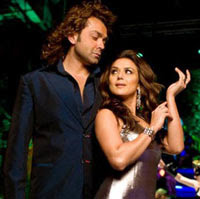Wear protective sunglasses

Fashionable sunglasses offer little or no protection from harmful rays emitted by the sun and people using sunglasses just for their brand name or style may even risk blindness, warn scientists in Britain. The sun emits harmful ultraviolet rays and prolonged exposure to this radiation may severely affect the skin, eyes or the immune system. But teenagers and young adults often choose sunglasses purely on the basis of their price and style without cross checking their safety standards. A survey by the College of Optometrists in Britain showed that 63 percent of those questioned were more influenced by how sunglasses looked and how much they cost than by the protection they offered, said the online edition of Daily Mail. This rose to 80 percent amongst respondents in the under-25 age group - with many keen to emulate the brands and styles of glasses worn by celebrities in glossy magazines. Worryingly, one in seven of the 1,500 surveyed did not wear sunglasses at all. "It is particularly worrying that younger people have so little regard for their eyes when up to 80 percent of exposure to UV rays over a person's lifetime occurs before the age of 18," said Susan Blakeney, optometric adviser at the College of Optometrists. Experts added that people with light-coloured eyes were more at risk from damage caused by ultraviolet rays if they failed to wear good-quality sunglasses. Although all brands legally sold have to meet basic standards, there are plenty of fakes of expensive and fashionable brands in the market that do not comply, the scientists noted. Wearing poor-quality sunglasses could damage the eyes and increase the risk of cataracts, which can lead to blindness later in life, they said. The researchers suggested a simple quality test before buying sunglasses- hold them at arm's length and tilt them slightly. Focus on an object in the distance, move them up and down and see if there is any distortion, especially at the lens edges. If the lenses are of high quality, there should be no movement.






